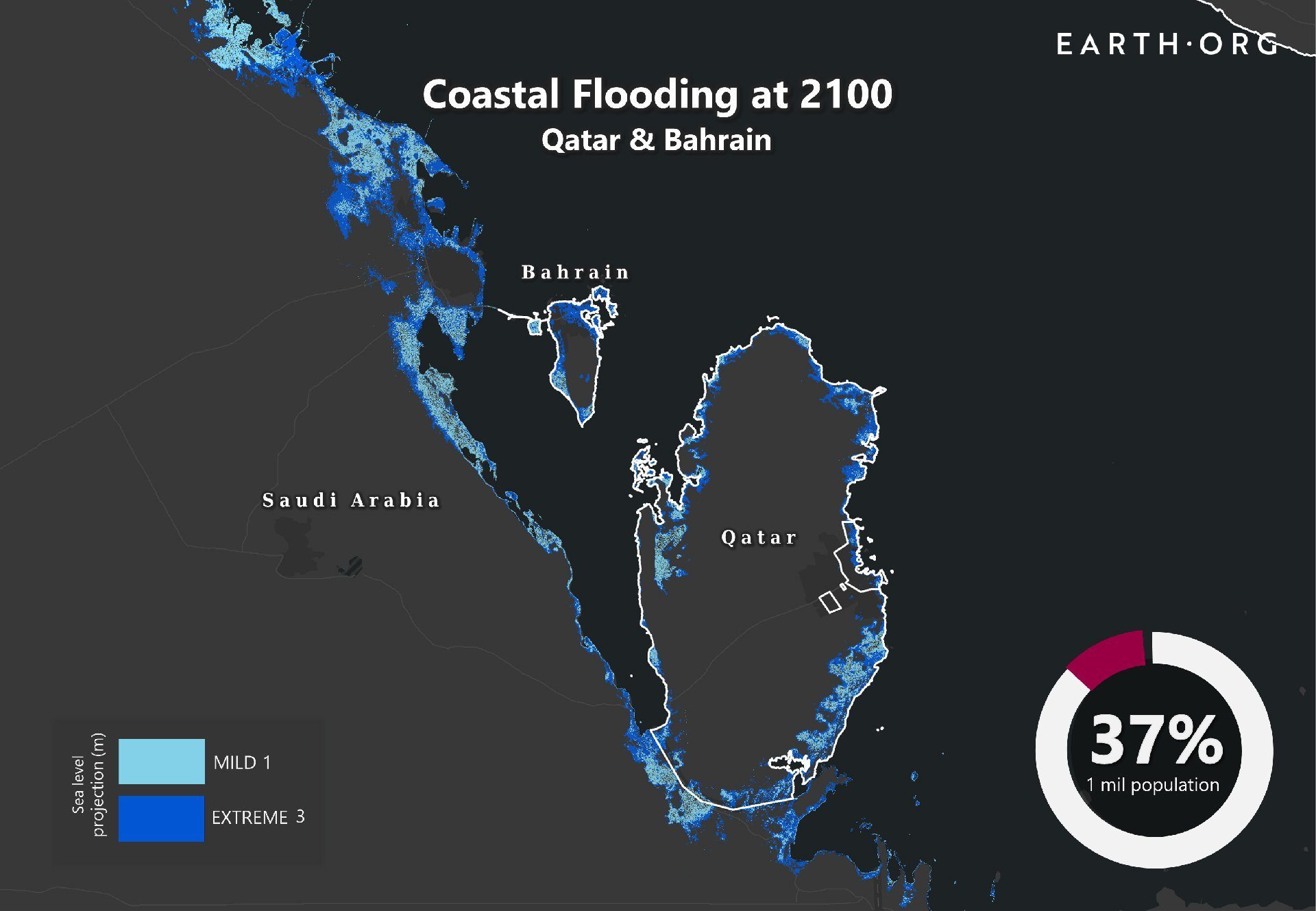A peninsula with a bulk of its commercial activities on the shoreline, global warming’s impact on the rising sea level could lead to significant economic and social problems
Coastal sea levels around Qatar could rise by up to 3 metres by 2021, according to the sea level rise projection map by earth.org.
Global mean sea level is projected to rise by 2m at the end of this century and over 18% of Qatar’s land area is low enough to be permanently reclaimed if the oceans rise 5m above pre-industrial levels.
The vulnerability of coastal cities has profound social as well as economic implications.
As Qatar’s rapid population grows, the city’s most important political and economic areas, West Bay, Corniche and Al Dafna, are located on the shoreline, making the sea level rise and possible submergence an expensive problem.
“In 2007 for instance, cyclone Gonu directly killed more than 50 persons, affected 20,000 people, and generated over estimated US$ 4 billion of direct damages in Oman alone,” the report added.
A heavily commodity-dependent economy in need of providing jobs for a growing young and educated population is a key challenge to sustainable infrastructure development. In addition, an unstable national budget dependent on global oil and gas prices, along with the precedence of short-term opportunities such as developing tourism pose more challenges to preventative measures.
Unfortunately, sea level rise is a challenge that will span decades, and progressive yet steady work will be key to mitigating its effects.
While the United Nations provides many avenues to help fund and execute adaptation strategies, these have historically been under-used by Arab countries.
“The onus is on countries who face high chances of future sea-level rise to begin reaching out and committing their thoughts, time and money to solving a problem that cares little for political and economic issues,” the report said.







